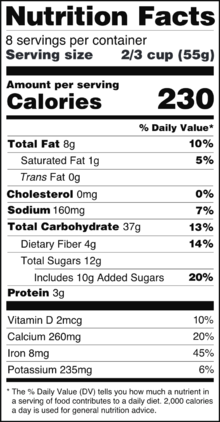Fats: The Good, the Bad and the Ugly—Part 1
Fat may have received a bad reputation in the diet world because many people think eating fatty foods makes you gain weight. However, avoiding oil and fat altogether does more harm than good. We need fat for our bodies to function properly; they are an essential part of a healthy diet. But we also need to consider the type and amount of fat we need to consume. This month’s nutrition theme at Beyond Hunger is “Fats: the Good, the Bad, and the Ugly,” where we will be sharing a series of blogs dedicated to weeding out the facts on fat!
Why We Need Fats
Dietary fats are essential when it comes to our health and how our bodies function. Fat helps:
- Keep us warm and protect our organs. Fat acts as insulation to keep us warm. It also acts as a cushion to protect our organs from damage.
- Provide energy to our bodies. We store energy (calories) we do not use in the form of fat. When we increase our activity, this stored energy can be converted back into useable energy that our bodies can use.
- Absorb and create nutrients. There are some nutrients that require fat in order to be absorbed and used in our bodies; These are: Vitamins A, D, E, and K. It is also required to make important hormones, such as testosterone and estrogen.
- Keep us full: Fat is more energy-dense than carbs and protein, meaning it has more calories per gram (9 calories/gram for fat versus 4 calories/gram for protein and carbs). It also takes longer for our bodies to digest. This can keep us fuller for longer after eating meals.
When we do not consume enough fat, it will be difficult for our bodies to do important things. But how much fat do people usually consume?
How Much Fat is in the American Diet?
The average American diet contains plenty of fat, but (generally) from unhealthy sources. According to the 2015-2020 Dietary Guidelines, most Americans tend to get 11% of their total calories from saturated fats1, which is a type of fat that can have negative effects on our health when we eat too much. Saturated fat is common in a lot of mixed dishes (dishes that contain multiple food groups, such as pizza and creamy casseroles/sauces), processed food, fast foods, and animal products, such as meat and dairy. Increased intake of saturated fat can put you at risk of developing heart disease and other health issues. However, there are things we can do to improve our intake of fats.
How to Improve our Fat Intake
We now know how important fat is for our bodies and how the average American diet tends to have too much of the “bad” fat. So how do we enjoy fats in a healthy way? General dietary recommendations say 20-35% of our total calories should come from fat, while restricting saturated fat intake to 10%. Let's break that down by using a 2000 calorie American diet. We'll use 30% of total calories from fat; that's about 600 calories (or 65 grams) from fat/day. Using 10% sat fat recommendation, this means 200 calories (or about 22 grams) of saturated fat should be eaten in one day.
Let’s say you are tracking the amount of saturated fat you eat in a day from all of your meals and snacks. Below is a table of some foods and the amount of sat fat in each. If we were to reach 22 g of sat fat, this is what it would look like:

The remaining 400 calories from fat should be made up of consuming sources of unsaturated fat.
These are common in:
- Cooking Oils (Olive, canola, vegetable, etc.)
- Nuts (Almonds, walnuts, etc.)
- Seeds (Flax seed, chia seeds)
- Avocados
Having our fat intake come from unsaturated fats and limiting intake of saturated fats can help reduce the risk of heart disease and lower our body’s triglyceride and fat levels.
Tips to replace saturated with unsaturated fats in foods are:
- Use oil instead of butter when cooking
- Avoiding the use of creamy salad dressings or sauces, when possible
- Limiting your consumption of red meat, bacon, and highly processed meats (like hotdogs and sausage)
It is also just as important to eat plenty of fruits, vegetables, and whole grains into your diet while also staying physically active.
We also want to mention that you are still able to have a healthy and well-balanced diet that also includes the foods you love. You do not have to completely avoid foods high in saturated fats, but you just need to be mindful of what foods contain saturated fats and limit the amount of times you eat them.
A Nutrition Facts Label can help you with that!

Other Resources
1. U.S. Department of Health and Human Services and U.S. Department of Agriculture. 2015–2020 Dietary Guidelines for Americans. 8th Edition. December 2015. Available at http://health.gov/dietaryguidelines/2015/guidelines/.
